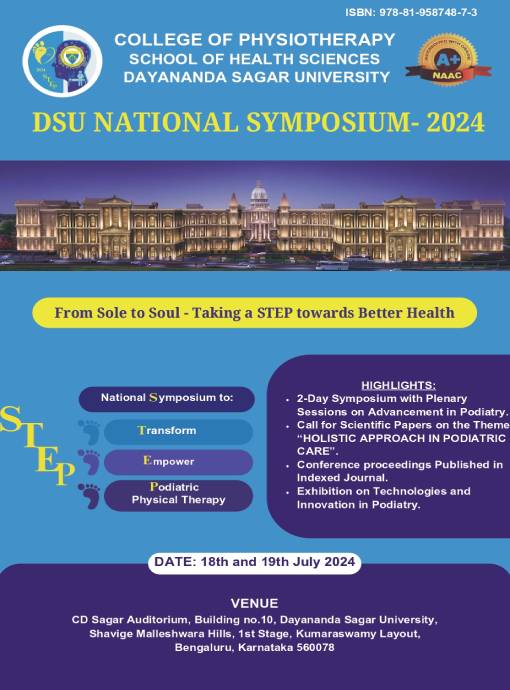The Impact of Mechanical Traction on Pain and Range of Motion in Knee Osteoarthritis: A Clinical Evaluation
DOI:
https://doi.org/10.18311/DSUPHY/9788195874873/2024/014Keywords:
Knee Osteoarthritis; Mechanical Traction; Pain Management; Range of Motion; Physical Therapy, Non-invasive TreatmentAbstract
Background: Knee Osteoarthritis (OA) is a prevalent degenerative joint disease characterized by pain, stiffness, and reduced Range of Motion (ROM). Conventional treatments include pharmacological interventions, physical therapy, and surgical options. However, mechanical traction, a non-invasive therapeutic modality, has gained attention for its potential benefits in managing knee OA symptoms. This study aims to evaluate the effectiveness of mechanical traction in improving pain and ROM in patients with knee osteoarthritis. Objectives: The primary objective of this study is to assess the impact of mechanical traction on pain reduction and enhancement of ROM in individuals with knee OA. Secondary objectives include evaluating patient satisfaction and adherence to the treatment protocol. Methods: A randomized controlled trial was conducted with 60 participants diagnosed with knee OA, divided into two groups: an intervention group receiving mechanical traction and a control group undergoing standard physical therapy. Mechanical traction was administered using a specialized traction device, with sessions lasting 30 minutes, three times a week, for eight weeks. Pain intensity was measured using the Visual Analog Scale (VAS), while ROM was assessed using a goniometer at baseline, four weeks, and eight weeks. Additionally, patient satisfaction and adherence to treatment were evaluated through questionnaires. Results: Preliminary results indicate a significant reduction in pain levels in the intervention group compared to the control group. Participants in the mechanical traction group reported an average pain reduction of 30% on the VAS, while the control group showed a 15% reduction. ROM measurements revealed a marked improvement in the intervention group, with an average increase of 20 degrees in knee flexion compared to 10 degrees in the control group. Patient satisfaction was notably higher in the intervention group, with 85% of participants expressing contentment with the treatment, compared to 60% in the control group. Adherence to the mechanical traction protocol was also high, with 90% of participants completing all sessions. Conclusion: The findings of this study suggest that mechanical traction is an effective intervention for reducing pain and improving ROM in patients with knee OA. The significant improvements in pain levels, ROM, and patient satisfaction highlight the potential of mechanical traction as a valuable addition to the conventional treatment modalities for knee osteoarthritis. Further research with larger sample sizes and longer follow-up periods is warranted to confirm these findings and explore the long-term benefits of mechanical traction in managing knee OA.
 Javid Iqbal Wani
Javid Iqbal Wani
